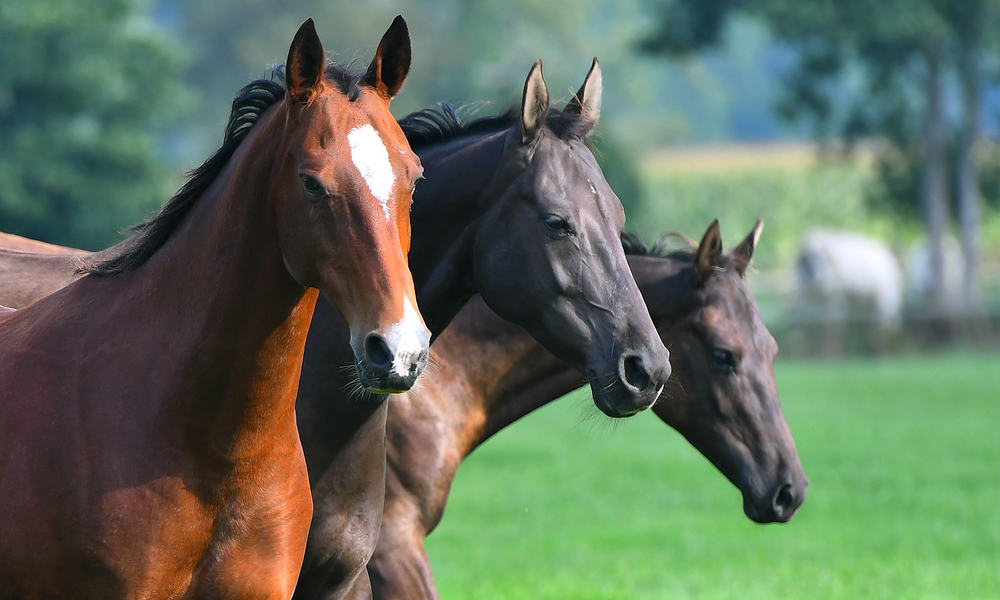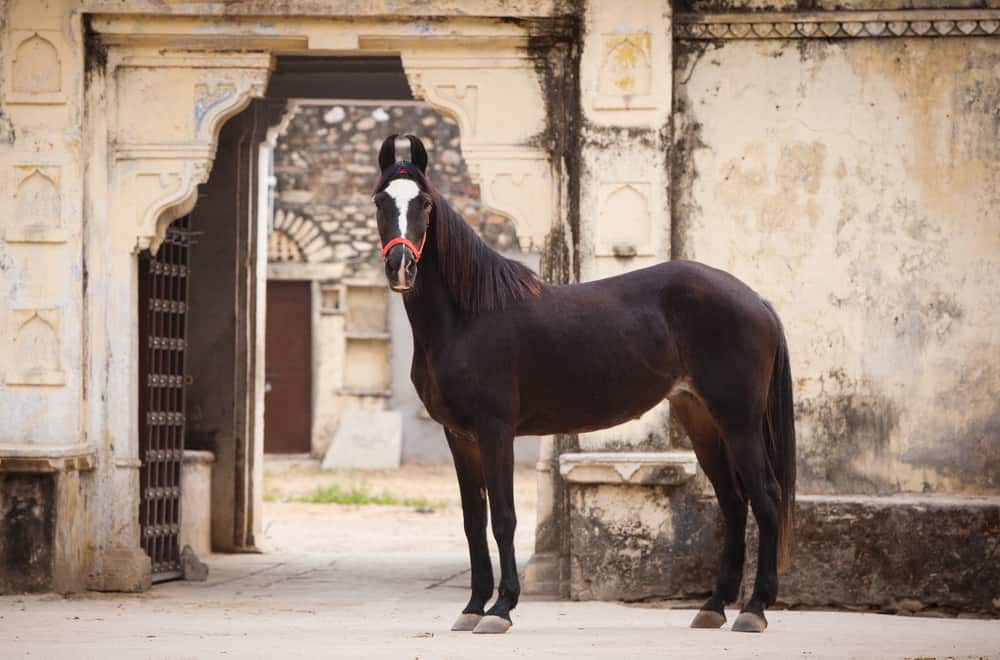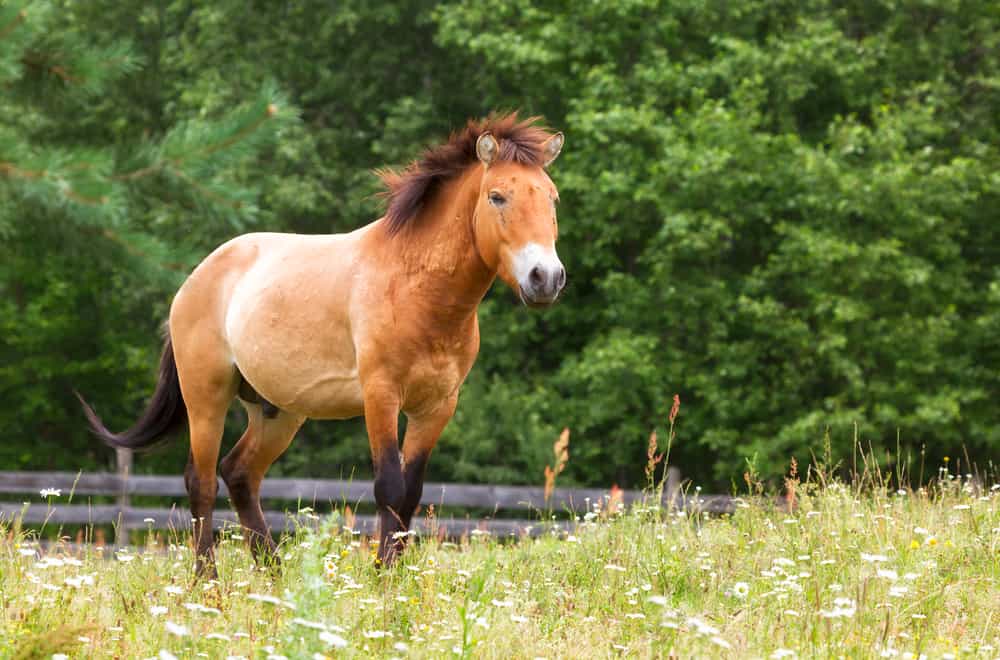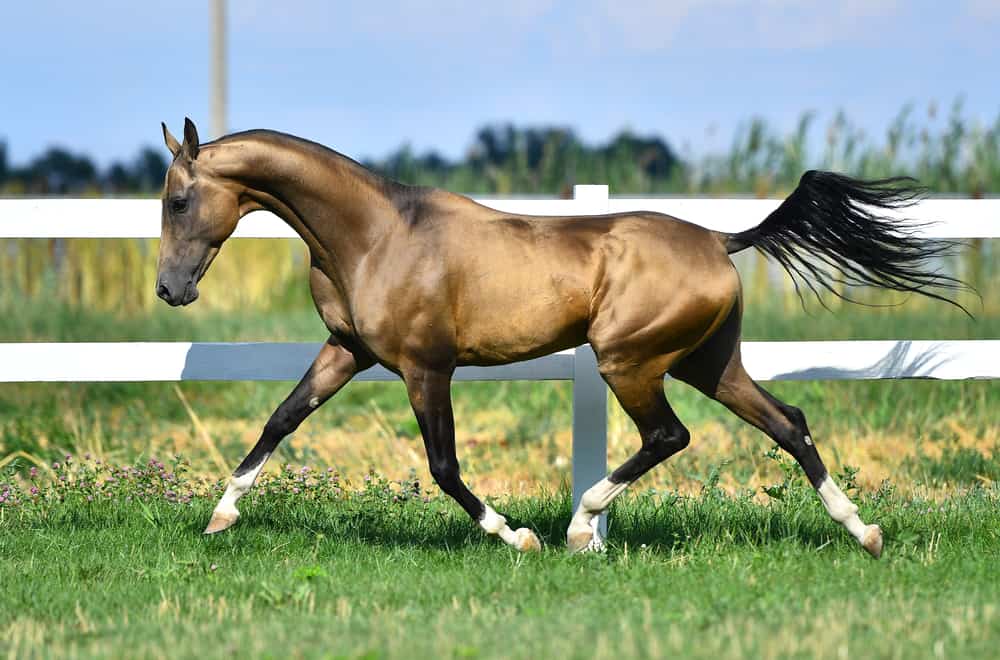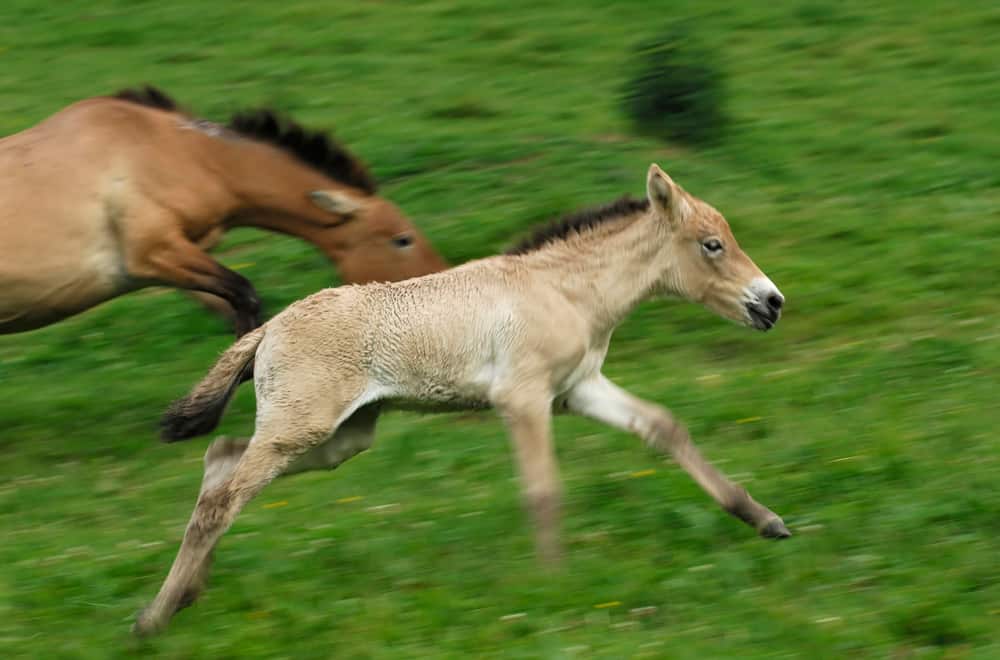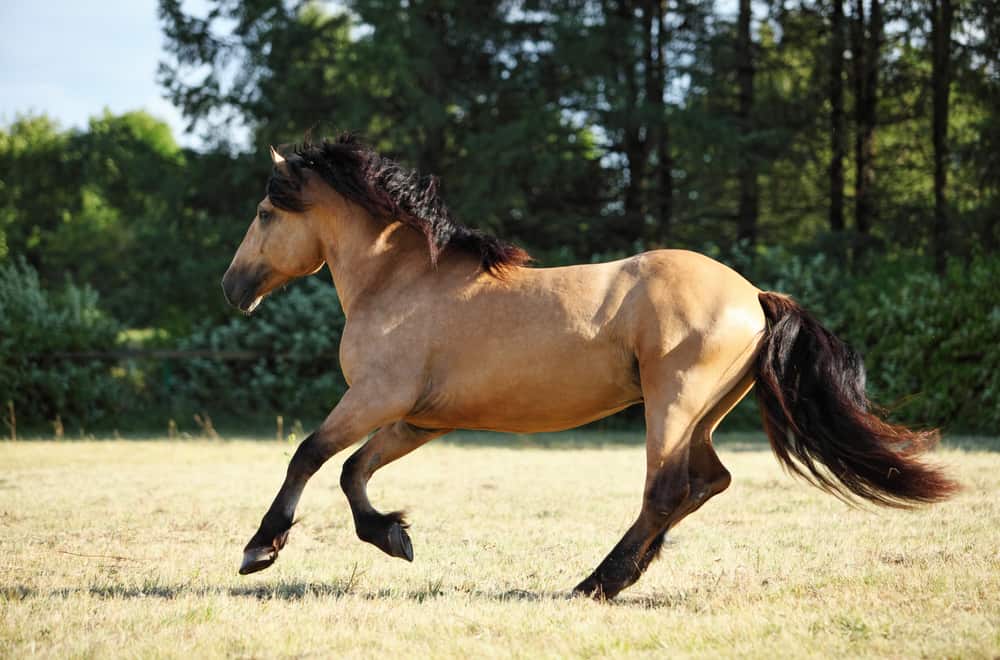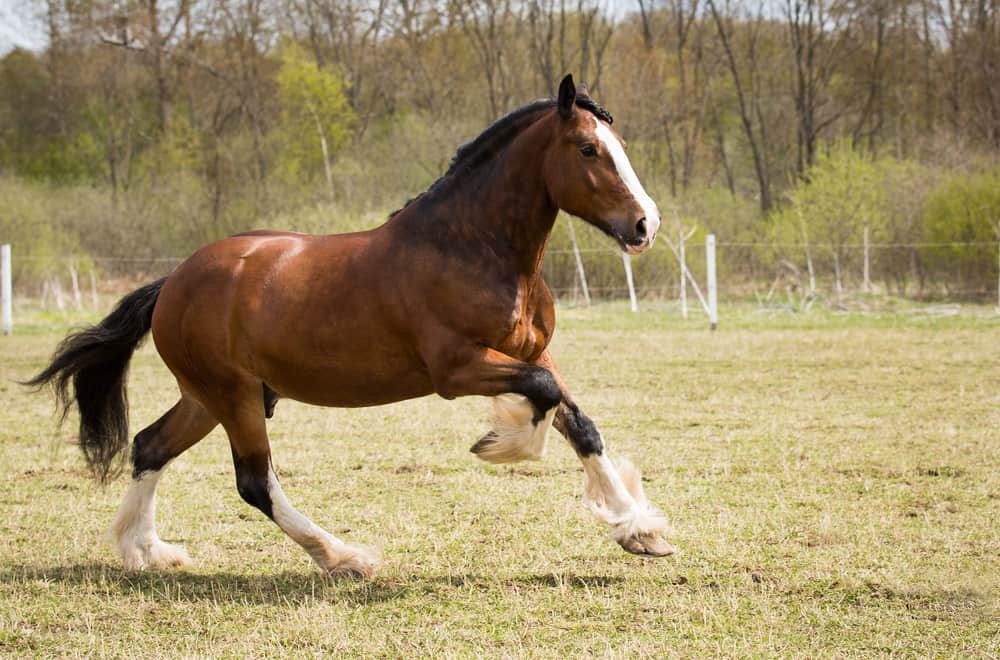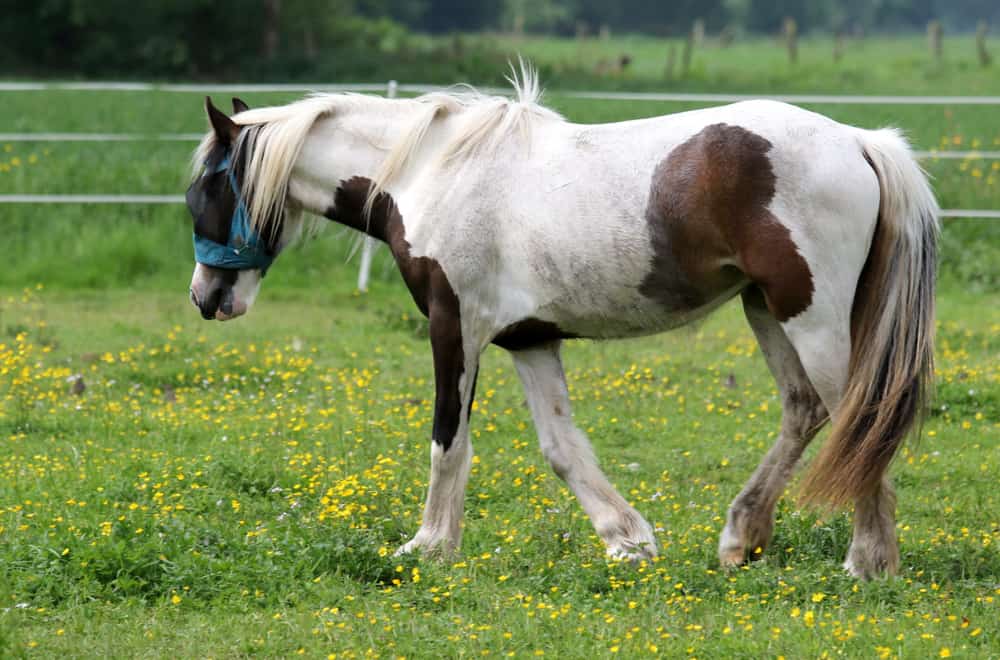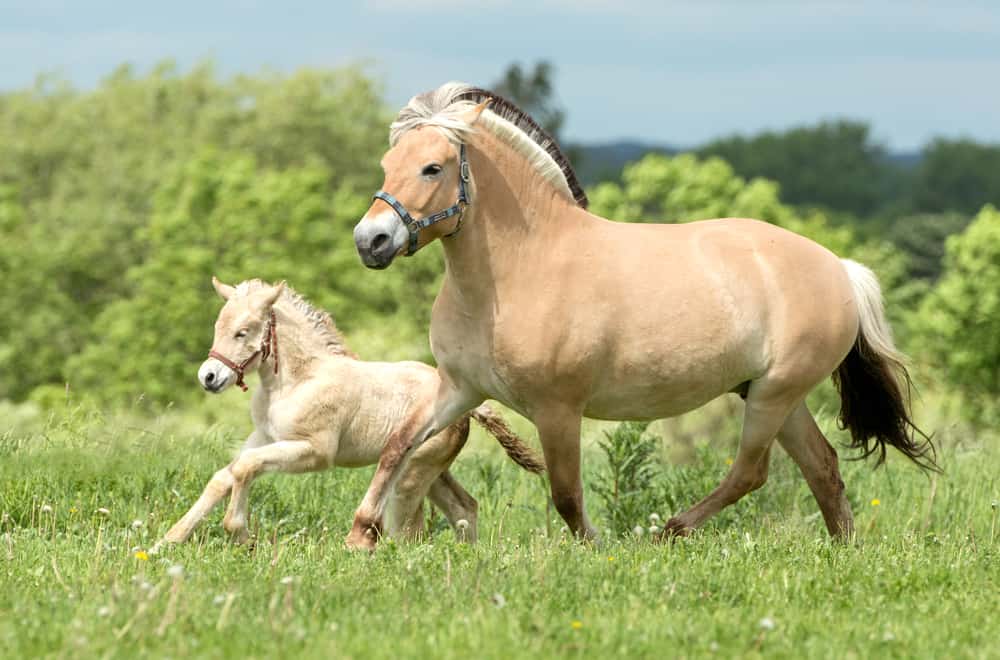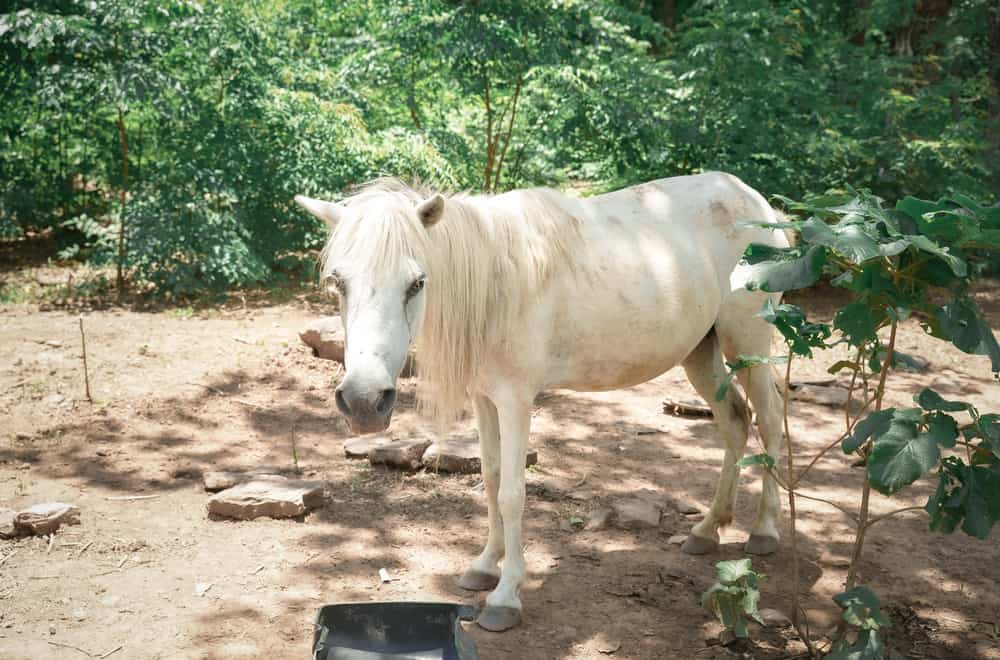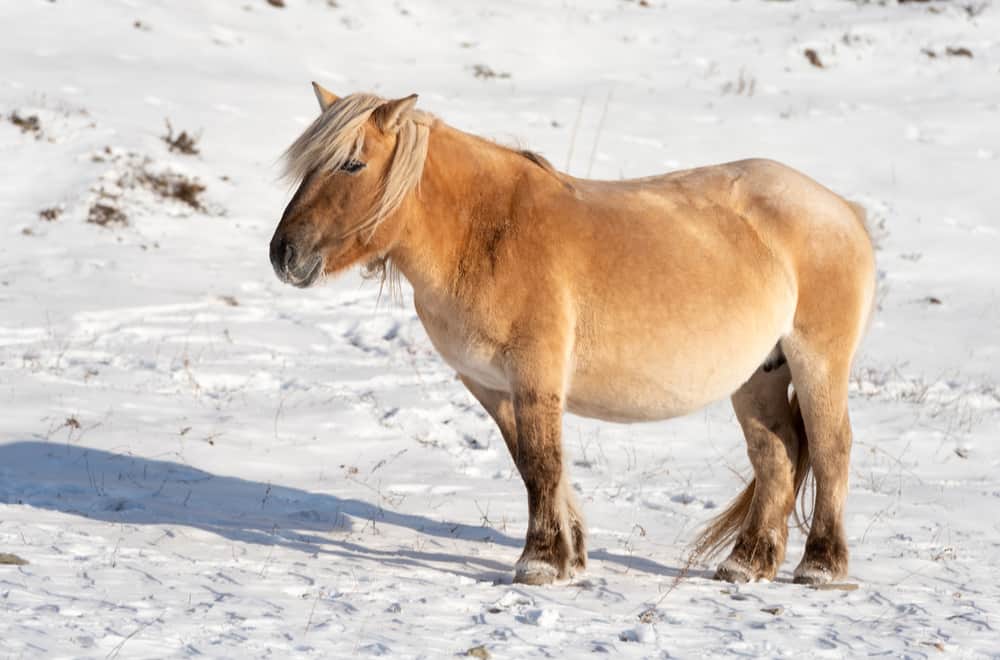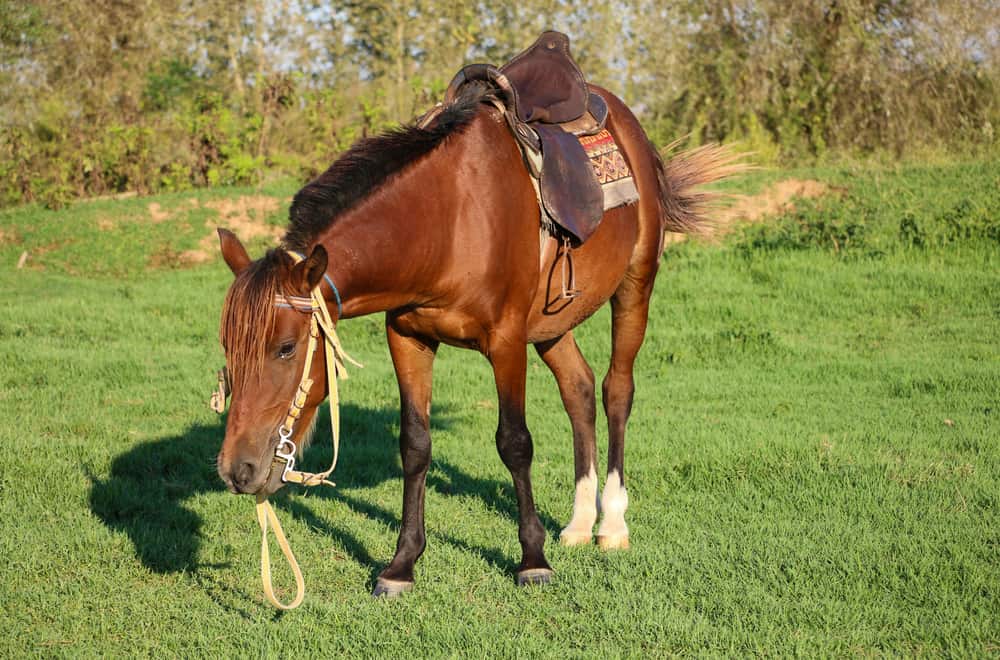Horses come in all shapes and sizes. But while they’re all beautiful, there are some that are, well, a little more unusual than others!
We’re going to take a look at some weird horse breeds. Yes, these are horses that will make you do a double take if you’re lucky enough to see them out and about!
So without further ado, let’s find out more …
1. Marwari
At first glance, the Marwari looks like similar to many other breeds of horse. It’s tall and elegant, with a long, graceful neck and an athletic build. But look closer, and you’ll see something that’s very different. The ears of the Marwari curve inwards!
In fact, this curve is sometimes so pronounced, that the tops of the ears almost touch each other. It’s a trait that’s unique to the Marwari.
If you’re seeing one of these horses, the chances are that you’re in India. This is where the breed originated. It was bred as a cavalry horse, although nowadays Marwaris are used in polo, show jumping and dressage, as well as in parades and ceremonies.
Even in India, they’re rare. There are only about a thousand Marwaris across the country.
Elsewhere in the world, the odds of spotting one are almost non-existent. For many years, the Indian government banned exports of the breed. The rules were relaxed between 2000 and 2006, and today temporary exports of up to a year are allowed.
Even so, it’s estimated that there are only about 30 Marwaris outside India. So if you spot those curving ears, you’re having a seriously lucky day. We’d recommend buying a lottery ticket on the spot!
2. Przewalski’s Horse
Przewalski’s horse is a seriously unusual looking animal. That’s because it’s also the oldest surviving breed in the world, and the only truly wild horse. Przewalski’s horses are depicted in some of the world’s earliest cave paintings.
It even differs in its genetic make-up from domesticated horses. Przewalski’s horse has 66 chromosomes, compared to 64 in a domestic horse.
That difference is obvious as soon as you see one of these amazing creatures. They have a large head with a deep muzzle, and a neck that’s almost as thick as their body. Their mane is short and stands straight up, rather than lying against their neck.
They have dun coats, with what’s known as “primitive markings”. These include a dark brown dorsal stripe – a stripe that runs along the back and is thickest towards the tail.
Their unusual name comes from Nikolaj Przewalski, a Russian explorer and geographer who documented them. And they’re so different from other horses, there’s even disagreement over how to classify them.
They’re not truly a “breed”, since they weren’t domesticated by human beings. And there’s disagreement over whether they count as a species in their own right, or should be thought of as a subspecies of wild horse.
But however you classify it, Przewalski’s horse is a truly fascinating animal.
3. Akhal-Teke
It seems almost rude to call a horse as graceful as the Akhal-Teke “weird”. But there’s certainly something very unusual about some representatives of this species. The odd factor here is their coat.
The Akhal-Teke has a very distinctive coat coloring. It’s metallic, with some horses looking almost as if they’re made from pure gold. Once seen, this isn’t a breed you’ll forget in a hurry!
Not all Akhal-Tekes have this golden appearance. The coat color can also be chestnut, bay, gray or even black. It’s the presence of the cream dilution gene that makes the golden buckskin or palomino Akhal-Tekes so distinctive.
Some believe that this gene served a particular purpose for the horses. The paler color could have helped to camouflage them in the deserts of their homeland of Turkmenistan. There they were used by native tribes in raiding parties – so being difficult to spot would be a clear advantage.
Today, the horses are so important to the culture of Turkmenistan that there’s a whole agency dedicated to their breeding.
The Turkman Atlary is responsible to the country’s very own horse minister. The organisation hosts a yearly meeting of the International Akhal-Teke Horse Association. And Turkmenistan has a national holiday in honor of the horse on the last Sunday of every April.
4. American Bashkir Curly
The American Bashkir Curly is another horse that stands out from the crowd because of its coat. In this case, the clue is in the name. Yes, the coat of this breed is known for its curls!
Those curls are the result of a particular gene. And because the gene is recessive, some American Bashkir Curlies actually have straight hair. But if two copies of the gene are present, they’ll have the distinctive curly coat.
Just how curly that is depends on the individual horse, as well as the time of year. In some horses, the curls are confined to particular areas, often inside the ears and on the fetlocks. Others are curly all over, even having delightful curly eyelashes!
The winter coat is the curliest. And even curly horses can have a straight coat in the summer. Some of the horses with the tightest curls can appear entirely bald in summer, when the curls are shed.
The other unusual thing about American Bashkir Curlies is that they’re usually tolerated by people who are allergic to other horses. It’s thought their hair doesn’t have the protein which causes allergic reactions.
5. Puerto Rican Paso Fino
The elegant Paso Fino breed of horse has two strains, the Columbian and Puerto Rican. Both strains are powerful and energetic horses, and they take their name from the countries where they developed. But it’s the Puerto Rican Paso that has one very special characteristic.
This is the only breed that has what’s known as the “tiger’s eye”. Not all horses have it, but if you come across one that does, you’ll certainly remember it!
It’s the result of a gene that lightens the eye color of the horse. The result can be a range of shades, including pale amber and yellow. But in some animals, it produces an eye with a bright orange hue!
Another unusual thing about this breed relates to its gait. A small number of horses, from both the Columbian and Puerto Rican strains, can perform the fino or paso fino.
This is a gait where the horse steps rapidly, covering as short an area as possible. It requires the horse’s center of gravity to shift backwards, and only a few can manage it. You won’t see it performed outside specialist competitions.
6. Shire
The distinctive Shire horse stands out from most other breeds – literally! It’s one of the largest breeds in the world. Shire horses have held world records at various times for the tallest and heaviest horse on the planet.
These beautiful animals stand an average of 17.2 hands for a stallion and 16 hands for a mare. The largest ever recorded Shire was the appropriately named Mammoth. He was an enormous 21.2 hands tall. And at his heaviest, he weighed in at an astonishing 3,360 pounds.
The size and power of Shires has been put to use through the years in agriculture. Although mechanisation has reduced the demand, you’ll still find some Shires doing forestry work.
But numbers have greatly declined since their heyday in the late nineteenth and early twentieth centuries.Today, you’re most likely to find Shire horses used in leisure riding and being paraded at country shows.
7. Falabella
The Falabella is at the opposite end of the scale from the Shire horse. This sweet breed is one of the smallest in the world. The average Falabella stands between just 7 and 8.5 hands and weighs around 165 pounds.
But unlike most other small equines, the Falabella is very definitely a horse, rather than a pony, in appearance. Its slim body and compact frame look very like that of a Thoroughbred or Arabian, just on a smaller scale.
It nevertheless has some pony-like features too. These include its thick coat, slightly larger head and slightly thicker neck. And Falabellas are very hardy creatures.
Their diminutive size means they’re often ridden by smaller children. They can also be trained to pull a cart. But Falabellas’ high cuteness rating means you’ll mainly find these horses living as pets.
8. Fjord Horse
The Fjord horse is another small breed, although in this case it’s very strong. It originates from Western Norway and is sometimes known as the Norwegian Fjord horse.
Although it stands between just 13.1 and 14.3 hands, it’s always referred to as a horse rather than a pony. The designation comes as a result of its prodigious strength. It has the musculature and bone structure of a draft horse, while its smaller size makes it very agile.
Perhaps one of the most distinctive features of the Fjord horse is its two-tone mane. The hairs are darker in the middle of the mane and lighter at the outsides.
All Fjord horses have dun coats, and many have very striking primitive markings. These include a dark dorsal stripe and horizontal stripes running across the backs of their forearms. Some have brown spots on their heads. And in rare cases, you’ll also see stripes across the horse’s withers.
9. Camarillo White Horse
The Camarillo is another horse with striking coloring. This rare breed is completely white, with pink skin beneath its coat.
They’re very appealing animals, with big eyes in expressive faces. They have a compact build with strong legs and an arched neck.
The white coat is rare in most other breeds. That’s because the white gene can actually be lethal. In other breeds, an embryo with one white gene will become a white horse. But if two white genes are present, the embryo will die.
Fortunately, that isn’t the case with the Camarillo White. The white gene here is a different kind. In fact, the breed doesn’t carry the lethal white gene at all.
Camarillo White horses take their name from the first man to breed them, Adolfo Camarillo. Their dramatic appearance means that they’re often seen in parades and ceremonies in their native California.
10. Yakutian
The Yakutian horse is one of the hardiest breeds on the planet. It originates from the freezing Siberian Sakha Republic, also known as Yakutia.
It stands about 13.3 hands tall, making it significantly bigger than breeds from neighboring regions. And it has developed valuable characteristics that enable it to survive the bitter temperatures of its homeland.
Perhaps the most obvious is its very long, thick coat. In winter, when temperatures in Siberia can plummet as low as -94 degrees Fahrenheit, that coat can grow to over 3 inches long.
The Yakutians’ stout trunks enable them to carry large fat reserves, which they accumulate in the fall. Their metabolic rate drops over winter, then picks up again in spring.
Their bodies also produce more cryoprotectants than other breeds. These are chemicals that prevent their tissues from freezing – a kind of biological antifreeze. In extreme cold, it’s even thought they can reduce the volume of blood that circulates around their bodies.
11. Caspian Horse
The Caspian horse is thought to be one of the oldest, if not the oldest, domesticated breed in the world. It comes from northern Iran, near the Caspian sea. It’s also known as the Khazar, after the Iranian name for that body of water.
Some equine experts believe that the Caspian isn’t related to the four main ancestral types of modern horses. That makes it very special – like Przewalski’s horse, it’s a link to the wild horses of ancient times.
It’s a small horse, standing between 9.75 and 11.75 hands. But it looks very like its descendant, the Arabian horse, with a slim body, straight back, graceful neck and high-set tail.
Caspian horses are very hardy, rarely needing shoes except when ridden for long distances over the stoniest terrain. And they’re excellent jumpers, perhaps because the distance from their hips to their hocks is very long.
Weird and wonderful
That brings us to the end of our look at eleven weird horse breeds from around the world. We hope you’ve enjoyed learning more about these incredible animals.
If you’re lucky enough to meet one, enjoy the moment. Whether they’re large or small, curly or straight haired, ancient or modern, these amazing breeds are truly something special.
